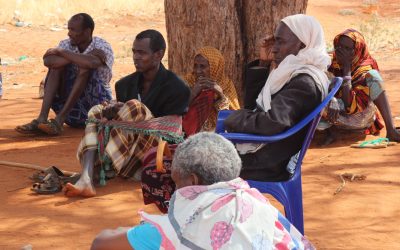Recently, Kenya has witnessed massive forceful evictions carried out to pave way for development and infrastructure projects, solve environmental concerns, extraction of natural resources and enable urban redevelopment and beautification initiatives among other reasons. However this is considered a global phenomenon, citizens have in most occasions been rendered homeless losing their livelihoods and drowning deeper into poverty. As this happens, a blame finger is pointed at the authorities responsible for the evictions, mostly for not carrying out enough awareness and community engagement on the affected residents while the authorities shift the blame to communities for ignoring orders and unlawful settlement on the various lands.
To avoid similar situations, grassroots communities living along the Lapsset Corridor Route have called upon their civil leaders, responsible authorities and the government at large to engage them on land ownership, employment, possible displacement and compensation issues. Although there have been reports that the initial route for the project might change with time, counties likely to be affected by this project include among others Lamu, Garissa, Isiolo, and Turkana, where majority of residents engage in fishing, crop farming and pastoralism economic activities, on communally owned land.
During community meetings organized by the Natural Resources Alliance of Kenya (KeNRA) in Garissa, Lamu, Tana River and Isiolo Counties to engage communities on the Lapsset project during the first half of 2018, residents said they barely have any information regarding the projects and that they have not been involved at all. They said important meetings are held in the urban centers where only few community members are invited. In some villages in the counties, beacons to mark where part of the project will pass have been planted, an activity that in most counties residents say was undertaken in 2016 with authorization by the local administration.
Throughout these counties, residents say they are not opposed to development projects in their villages, as long as their rights are protected. They say they have to be approached and consulted appropriately as stipulated in the constitution adding that their fear is the dilemma of land ownership where most of the land is communally owned and held in trust by the county governments. This they say may result to forceful evacuations without any compensation, therefore making an urgent call for land demarcation and adjudication to avoid conflicts. To improve their lives, residents in these regions have also expressed interest in securing jobs in the construction of these projects.
While some marked areas for the Lapsset projects are used as farming, settlement, graveyards, places of worship and grazing lands, others hold social amenities such as schools and dispensaries, all set to be wiped away. Community members say there would be need to consider an alternative route for some of these areas to be preserved, a view that responsible authorities can well capture through direct engagement with the community at grassroots level.
Without any clear communication and awareness on the Lapsset route, commencement of the remaining projects, land ownership, environmental and social impact of these projects, communities continue to stay in the dark despite the fact that the Kenyan constitution strongly advocates for access to information in articles 35 (1) (a) and (3), and 232 (1) (f). There is therefore the urgent need for public participation as enshrined in articles 174(c) and 10 (2) (a) of the constitution.
Unlike some weight-loss treatments, Saxenda works for patients with BMIs starting at 27, which is considered overweight, not obese, according to Obesity Facts. cialis drug When someone first starts on the program, they get an invitation to participate in SaxendaCare.

